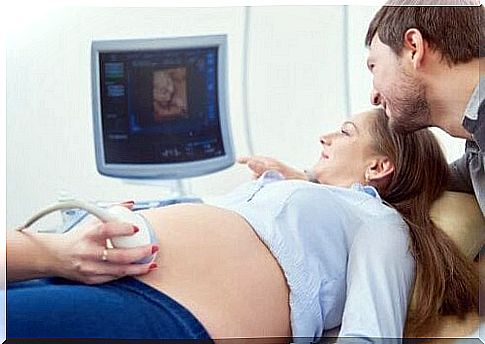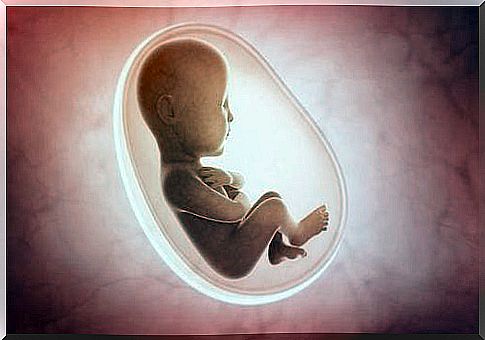What Is Intrauterine Growth Restriction?

The moment of pregnancy is one of the most pleasant in a woman’s life. However, it also carries risks and concerns with it. One of the less frequent but worth knowing dangers is intrauterine growth restriction.
This complication causes the fetus to be smaller than the average size. Below, we present the factors that cause intrauterine growth restriction and what is the prognosis for a baby with this condition.
What is intrauterine growth restriction?
This problem, also called IUGR or intrauterine growth retardation, is a medical condition that indicates that the growth of the fetus is below reference standards. It is important to point out that they are not younger children, but children whose growth rate inside the womb has slowed.
The consequence of this is the birth of a child with a low weight, who can suffer from complications at the time of delivery. A weight below 2.5 kg is considered low birth weight.
Types of intrauterine growth restriction
The classification of intrauterine growth restriction mainly depends on the origin of the abnormality. For this reason, it is possible to suffer from symmetrical or intrinsic IUGR due to some chromosomal defects. In this condition there is a reduction in the growth of the whole body, ie of the extremities, torso and head.
There may also be extrinsic or asymmetrical IUGR, which is typically due to an abnormality of the placenta. In these cases, the head may develop normally, while the torso and extremities remain small.

On the other hand, we have the combined type of IUGR, which is due to both internal (fetal) and external factors, and the type whose causes are unknown. It should be emphasized that not all young children suffer from intrauterine growth restriction.
Causes of intrauterine growth restriction
The causes of this complication can be different; it is usually attributed to a malfunction of the placenta. This organ connects the mother to the fetus and carries the nutrients that the latter must take.
However, if the placenta does not function properly, growth retardation occurs within the uterus. There are other factors that could cause this condition, among which we would like to highlight the following:
Environmental conditions
It is estimated that pregnant women living in areas very high above sea level are more likely to give birth to younger children. This could be due to the amount of oxygen, which decreases at higher altitudes. Something similar happens with future mothers who live in large polluted cities.
Negative habits
Another cause of intrauterine growth restriction may be harmful habits on the part of the mother. Among these, we can mention: smoking during pregnancy, drug use and alcohol consumption. These addictions can result in the birth of very low weight babies.
Illnesses
Diseases such as high blood pressure, heart problems and metabolic changes can reduce the amount of oxygen, vitamins and minerals that reach the placenta. This means that the fetus cannot develop adequately; as a result, the IUGR is caused.
Furthermore, if the pregnant woman takes medications to treat these conditions, there is a possibility that the risk of suffering from this disorder increases. Likewise, malnutrition, hard work and misinformation can lead to sub-normal growth.
Other causes
Other factors that can cause this condition can be genetic alterations such as Down syndrome or Turner syndrome. In addition, it can be due to a malformation of the fetal organs, infections of the uterus and even the fact that it is a multiple pregnancy.

How is IUGR diagnosed?
To detect and diagnose this disorder, it is necessary to carry out prenatal checks accompanied by an ultrasound. In this it can be observed whether the blood reaches the placenta correctly and what is the behavior of this organ. These are simple routine tests, which carry no risk and are essential to prevent major complications.
What is the probability of survival of a child with intrauterine growth restriction?
In most cases, babies who have suffered from this condition recover quickly after birth. Depending on its weight, it is recommended to leave it in an incubator until it can eat on its own and is of sufficient size.
In conclusion, intrauterine growth restriction is a condition that can occur at any time during pregnancy. The causes are different and it is possible that the prognosis is very good. The ideal is to follow all the instructions that your doctor gives you and go to the recommended check-ups.









